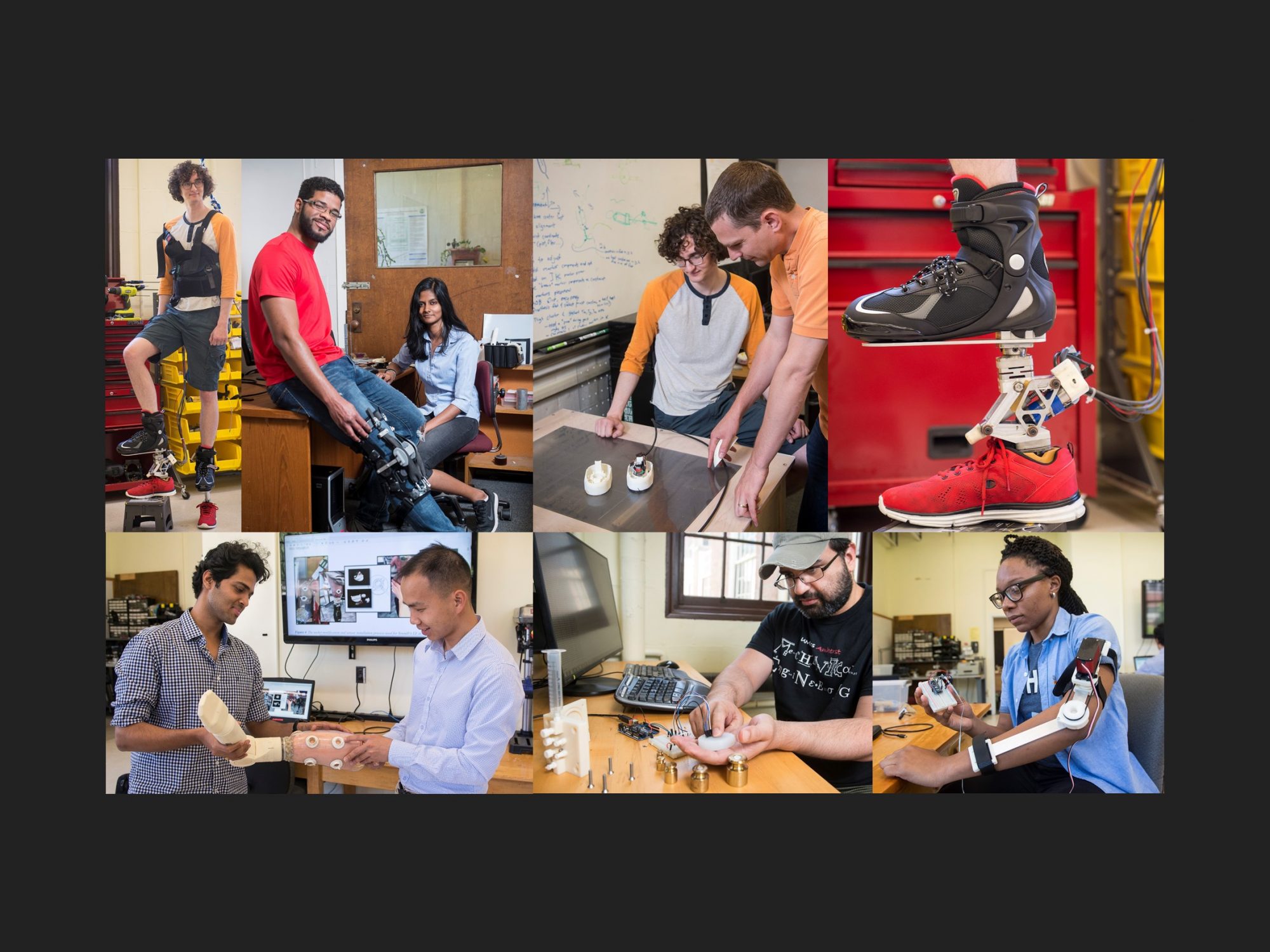A Physically Interactive Surface Robot
Touchscreens are used to provide a highly interactive interface with virtual ideas and visualizations. However, the physical interaction is one-way: the user inputs touch, but feels only a smooth surface in response. A prototype device has been developed at the UMass Amherst site in collaboration with the Center for eDesign industry member FTL Labs to add physical feedback to touchscreens. The “haptic mouse” is a handheld robot which rests on a large touchscreen surface (Playsurface, FTL Labs). It allows the user to feel the boundaries of virtual objects push back on their hand as it slides against them.
[foogallery id=”701″]
The device works by steering a single wheel in free-rolling contact with the touchscreen surface, which it controls by communicating with haptic touchscreen applications developed in the open source game engine Unity. The haptic mouse can simulate varying mechanical properties of the virtual objects it collides with, providing harder or softer boundaries as the developer desires. This technology allows for design tools where collisions and interference can be felt when they may not be seen, path restrictions in touchscreen operation panels to encourage a specific workflow, force-feedback enriched upper limb physical therapy, and other potential applications in simulation, virtual reality, gaming, and touchscreen accessibility for disabled people.
